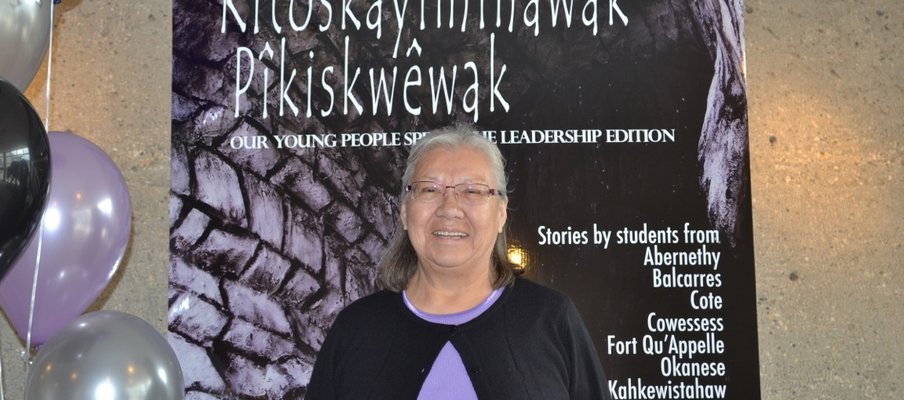Students recognize First Nations and Métis leaders

Related Programs
Building community ties and connections is challenging for large, rural school divisions. However, some divisions make these connections a vital part of their students’ education.
In 2010/11 Prairie Valley school Division (PVSD) challenged students to explore the different connections people have with the land and their views of the Treaties. Incorporating photography, video, audio and storytelling students created 12 films that are now part of the ongoing Treaty education in the division.
Hoping to improve literacy amongst their students, the Prairie Valley school District (PVSD) engaged 200 Grade 10 students from eight school including three First Nations schools through a Creative Partnerships grant.
Through the grant, supported by the ministry of education (First Nations/Métis Achievement Fund), the Saskatchewan Arts Board (Creative Partnership Innovations), SaskCulture and Saskatchewan lotteries, PVSD hopes to inspire students to capture the teachings from role models and community leaders.
Sandy Pinay-schindler, First Nations and métis education coordinator with PVSD explains, “When we say ‘connecting’ we mean meeting and talking with community First Nations and métis leaders.” she believes restoring these connections has become the goal of several creative projects in the divisions. “There is a natural connection between young and old people in traditional societies.”
Throughout the project, 120 Grade 10 students from Balcarres Community school, Bert Fox Community school, Chief Kahkewistahaw Community school and Cowessess Community educational Centre visited, interviewed and photographed 50 leaders, amongst them veterans, elders, chiefs and councillors, educators, business and political leaders, journalists and artists, as well as future leaders - youth who are committed to culture, education and a healthy lifestyle.
The result of their labour is a professionally designed and edited book. Kitoskâyiminawak Pîkiskwêwak: our Young People speak: The leadership edition was launched on May 23, 2012.
The book launch – complete with red carpet and formal attire – filled students with pride of their achievement and the 50 community leaders presented in the book felt honoured to be part of the project.
“Taking on the roles of interviewers, photographers, researchers and writers gave the students a chance to see a different side of themselves while they were able to have a more intimate view of their leaders,” says Rhonda McAlpine- Haubrich, Kakisiwew school, ochapowace First Nation.
Kitoskâyiminawak Pîkiskwêwak is becoming another important learning resource for PVSD. But maintaining community ties is a dynamic process and the school division is already in the midst of planning a new project: a book focusing on the students’ artistic response to community member stories of their “healing journeys” after being released from residential schools. Pinay-Schindler knows it’s a delicate topic, but a very important one. “We don’t want to dwell in the past, nor ignore it; we simply want to acknowledge it.”




